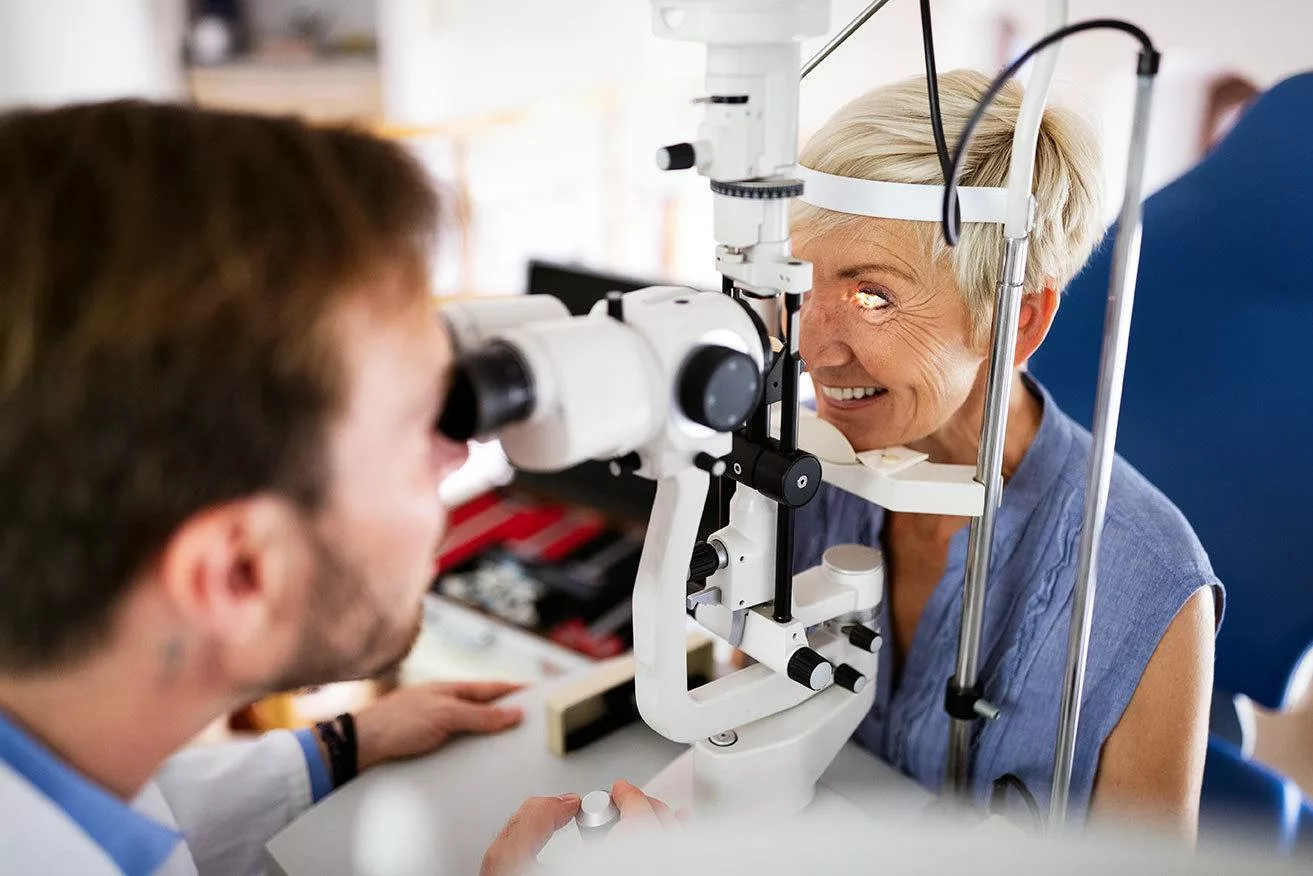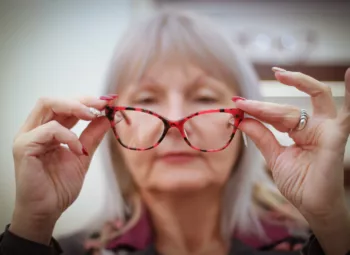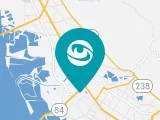
A guide to the most prevalent age-related eye conditions for people ages 40 and older
The CDC estimates that over 4.2 million Americans over the age of 40 are legally blind, and the leading causes are all age-related eye conditions. Many of these conditions are treatable and with a simple eye exam, they can be easily detected before permanent damage occurs.
At NeoVision Eye Center, our ophthalmologists specialize in the early diagnosis and treatment of all age-related eye conditions. In this guide, we outline the symptoms and treatments for four of the most prevalent age-related eye conditions:
- Cataracts
- Glaucoma
- Presbyopia (age-related farsightedness)
- Diabetic Retinopathy
1. Cataracts
Cataracts are the leading cause of preventable blindness worldwide. An estimated 95% of people in the United States over the age of 65+ are affected by age-related cataracts (Nuclear Sclerotic Cataracts). When left untreated, age-related cataracts grow progressively larger and will result in decreased vision and eventual blindness.
Common Symptoms of Cataracts
Cloudy vision is one of the most common symptoms of cataract development. However, cataracts do not always present with symptoms in the early stages of development. In fact, some patients can have cataracts for years without noticing any changes in their vision. By the time they do, the condition can be in an advanced stage.
Other common symptoms of cataracts include:
- Blurry vision
- Sensitivity to light
- Colors appear faded
- Diminished night vision
- Double vision
Treatment of Cataracts
Laser Cataract Surgery is a quick outpatient procedure that only takes around 10-15 minutes to complete and has an extremely high success rate. Over 2 million cataract surgeries are performed in the U.S. every year, making it the most common surgical procedure in America.
During Laser Assisted Cataract Surgery, the cataract and natural eye lens are removed and replaced with an intraocular lens (IOL) to restore clear vision. There are a variety of IOLs available, including premium lenses that can reduce your need for corrective eyewear entirely.
2. Glaucoma
Glaucoma is the second leading cause of vision loss in the world. This eye condition is most often caused by an increase of pressure in the eye resulting in damage to the optic nerve. The most common type of glaucoma is open-angle glaucoma (POAG), which affects over 4 million people in the U.S.
There are a number of factors that increase the risk of glaucoma including genetics, age, and ethnicity. Latinos over the age of 60 and African Americans over the age of 40 are at higher risk of glaucoma.
Common Symptoms of Glaucoma
Glaucoma develops slowly and typically only presents with symptoms after permanent vision loss has occurred. As the condition progresses, symptoms can include:
- Pain or pressure behind the eyes
- Headaches
- Blurred vision, or blind spots
- Loss of peripheral vision (tunnel vision)
- Red eyes
Treatments for Glaucoma
To lower the risk of permanent vision loss, it is essential to catch the early development of glaucoma through annual eye exams. Glaucoma treatment prevents further damage to the optic nerve by lowering the pressure in the eyes. Common treatments involve reducing the pressure inside the eye via eye drops or other medications, laser treatments, or surgery.
3. Presbyopia (Age-related Farsightedness)
Presbyopia is the result of the loss of flexibility of the eye’s lens, which prevents it from focusing light correctly on the retina. This causes nearby objects to become blurry. According to the National Eye Institute, presbyopia is a normal part of aging and typically develops around the age of 45.
Women over the age of 40 have a higher prevalence of presbyopia compared to men in the same age group. However, the likelihood of developing age-related farsightedness generally increases by 50% in both men and women after the age 65.
Common Symptoms of Presbyopia
The symptoms of presbyopia are the most obvious in this list of age-related eye conditions. The most common symptoms of presbyopia include:
- Tired or sore eyes caused by eye strain
- Trouble seeing near objects
- Headache
- Holding reading materials at a greater distance to focus
Treatments for Presbyopia
Though the symptoms of presbyopia are usually very obvious, it is important to attend annual eye exams to rule out the possibility of more serious conditions and determine the best treatment. Fortunately, there are a number of treatment options for presbyopia including corrective eyewear and surgical intervention.
4. Diabetic Retinopathy
It is estimated that 4.1 million people 40 years and older in the U.S. have Diabetic Retinopathy.
This condition is a result of diabetic complications caused by high or uncontrolled blood sugar levels damaging the retina and causing vision loss. Without proper management, this condition can cause blindness.
Common Symptoms of Diabetic Retinopathy
This eye disease presents with no symptoms in its early stages, and needs to be diagnosed through a dilated eye exam. In the later stages of the disease, symptoms may begin to manifest, including:
- Blind spots in vision
- Dark spots in vision
- Decreased vision or changes in vision
Diabetic Retinopathy Treatment
The best treatment for diabetic retinopathy is strict control of your blood sugar. Through thoughtful management you can significantly reduce the long-term risk of vision loss. You can also lower your risk of vision loss associated with retinopathy by scheduling an eye exam.
Early detection is possible with annual eye exams
The necessity of annual eye check-ups for detecting eye diseases is clear, especially for patients 40 years and older. For age-related eye conditions, early detection can help prevent further progression and ensure the longevity of your eye and vision health.
Contact our specialist at Neovision today to schedule a comprehensive eye exam.
Learn more about eye care after 40
Schedule a free consultation with ophthalmologist Dr. Tandon and discuss eye care and treatment options for your unique vision goals.
"*" indicates required fields





